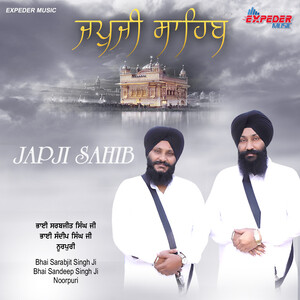
or words in praise of the Khalsa, (10) Shastra Nam-Mala verses in praise of many arms, (11) Charitro pkhyan or 404 tales of the wiles of women, (12) Zafar Namah (in Persian), or letter of victory, addressed to Aurangzeb, (13) Hikayats, or legends and tales, also in Persian, including some stories on the lines of Charitro pakhyan.Īs soon as the Dasam Granth was compiled, it led to a great controversy among the Sikh divines, especially in relation to its secular portions and more notably in regard to the Charitro-pakhyan and Hikayats. (2) Akal Ustati, or the praises of God and the denunciation of ritual, superstition and cant, (3) Chandi Charitra, I and II, or the life of Chandi, the goddess of war, (in Braj) (4) Var, or ballad of Durga, the exploits of the goddess of war (in Punjabi), (5) Gyan Prabodh, or the sayings of Wisdom, which also include some tales from Mahabharta, (6) Chaubis Avtar, or the life-stories of the incarnations of Vishnu, according to the Hindus, and Brahrnavatar and Rudravtdr, (7) Shabd Hazare, o r devotional hymns, (8) Thirty-three Swayyas, or the praises of the one immortal, unknowable God of wonder and grace, (9) Khalsa Mahima. The Contents of this Granth, which is mostly in Braj Bhasha, are (1) Jap, or meditations. However, much of its secular portion is the subject of great controversy even amongst the Sikhs who ascribe its authorship not to the Guru but to some of his 52 poets who lived at his court. But, some historians assert that it was not the adi Granth, but his own Book that the Guru dictated to Bhai Mani Singh.

According to all available evidence, it was compiled by Bhai Mani Singh, the devout and learned Sikh custodian of the Golden Temple (who later became a martyr) 26 years after the death of Guru Gobind Singh, at Damdama. I dwell in the khalsa who is a storehouse of all my requirements. Khalsa is my mother, father & source of all comforts.

Guru Sahib said ?Manas Ki Jaat Sabhe Eko Pehchanbo? consider Whole humanity the creation of one God. Guru Sahib?s life and message have meaning for everyone. Guru Sahib synthesized Bhakti (Devotion to God) with Shakti (Power) and charned Sikhs (disciples) into Singhs (Lions). Guru Sahib sacrificed his father, four sons and his life for sake of the nation. So long as there is piety in the soul, there is strength in the body to bear all hardships. God gives strength to the pure the Khalsa. Guru Sahib believed all strength is the gift of God and if God is on your side, you can never be weak. Guru Sahib gave his followers a new greeting : WAHE GURU JI KA KHALSA, WAHE GURU JI KI FATEH (The Khalsa belongs to God and victory is of God). The Khalsa was designed to be an army of winners, fearless and pure in service of God and man. The Khalsa was created as a Divine dynamic force to lead the hyman race to strive forever to achieve excellence in human relationship for establishing a society of equals without any discrimination of caste, creed and country. Guru Sahib had given the common epthet Singh (Lion) to male and Kaur to female. Guru Sahib gave them their own personality with beard and hair with turban on. Guru Sahib prescribed Five Kakar ? Kesh, Kanga, Kara, Kirpan and Kachha. Guru Sahib further inspired in them the belief that they are born to conquer. It was a Baisakhi day in 1699 at Anandpur that Guru Sahib laid down the foundation of the Khalsa Panth and appointed five beloved ones (Panj Pyaras). Guru Sahib created Khalsa whom he called Akal Purakh Ki Fauj (The Army of God). Consequently Guru Tegh Bahadur Sahib marched to Delhi where he was martyred in 1675 at Chandni Chowk (Gurudwara Sis Ganj Sahib).


This shows his sincerity of purpose and spirit of self sacrifice. Guru Gobind Rai (Childhood name) asked his father who was more suitable than him for this sacrifice. The Guru Sahib remarked that only the supreme sacrifice made by a pious soul could protect them. When Guru Sahib was only nine years old, Kashmiri Pandit approached his father Guru Tegh Bahadur Sahib to save Hindu dharma. Even as a child Guru Sahib considered no price too great to pay for one?s principles. Guru Sahib displayed extraordinary courage at a critical period of his life. Guru Sahib was a great thinker, a writer, a philosopher, a soldier and a saint. Guru Sahib was founder of an secular ethical socialistic democracy and tried to remove castism. Guru Sahib ushered in a new era of hope and rising spirit. At that time India was politically divided and religiously degenerated. Guru Gobind Singh Ji was born in Samvat 1723 at patna.


 0 kommentar(er)
0 kommentar(er)
